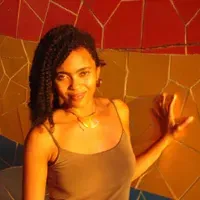Pacific Dance: Ojeya Cruz Banks
Written by

Three emerging to mid-career choreographers of Pacific Island descent have taken on the 2011 Pacific Dance Choreographic Laboratory; Ojeya Cruz Banks, Sesilia Pusiaki Tatuila and Tepaeru-Ariki Lulu French.
Aaron Taouma from Pacific Dance New Zealand asked Ojeya Cruz Banks about how she got there and what she hopes to achieve in the lab.
The Pacific Dance Choreographic Laboratory is in its third year and is a three-week intensive lab in which the three choreographers have the opportunity to create dance works towards an eventual showing of works in development at the Mangere Arts Centre on Friday 14th October (7pm).
Ojeya Cruz Banks is the most experienced of the three choreographers. She is of Guahan (Guam/Chamorro) descent and is currently a lecturer and choreographer in dance studies at the University of Otago. Banks is an accomplished academic and dance researcher holding a PH.D from the University of Arizona and having published various pedagogy and dance themed works.
When did you start dancing and what drove you to continue on with it to this point? Tell us a bit about yourself and your history.
I started dancing in my grandma’s living room. My first dance ever was the Chamorro cha cha. I just loved to dance and sing since I was child but I went to my first dance class at the age of 21. It was a West African (Mali) dance class with djembe percussion. and I was instantly hooked. Since then I have studied many dances from West and East Africa, Cuba and different North American modern/contemporary dance styles. My interest in dance and dance education has influenced my academic work. I have conducted dance field-work in Senegal, Mali, Guinea, Uganda, Cuba, Ethiopia, Zanzibar and recently my focus has included Aotearoa and Guam.
What do you love about dancing?
I love the community dance brings to my life and the cultural knowledge and people/land connection gained through studying it. Dancing enables me to embody fierceness, playfulness, trust, honesty, mana/spiritual power; it is my teacher and can impart clarity and purge emotions that need airing out. It is also calming and uplifting.
What are your Pacific Islands roots?
My family is from Barrigada and Chalan Pagu, Guahan/Guam. I belong to the Paapaa and Cudi clan. My mother Nora was born there. My Grandpa (Juan Cruz) and Grandma (Julia Blas Cruz) moved the family to California in the 1960s when my mom was a small child then. That’s where I ended up being born too.
How do you see these roots, or this heritage, informing your current practice?
This heritage informs my current practice by shaping my current dance inquiries. I am currently using dance to explore and understand my identity and family history within the Pacific Guam Diaspora context. I grew up in the U.S and did not visit Guam until I was an adult hence my dance practice is about reclaiming, recovering, recuperating my connection to my Pacific homeland; and exploring my oceanic identity. I am using dance to reconcile issues of geographical displacement, loss of land and water bonds and the interruption of the dissemination of important genealogy.
What are you developing in the choreographic laboratory? What is your idea about?
The solo dance I am working on is called Espritu Tasi and is a dance project that combines movement with an ecological exploration of Guahan’s waters. Viewing ocean as a text, the choreography uses movement qualities such as waves drawing in and breaking, the strength of particular currents and the converging of different flow forms, subtle to turbulent motion, the abyss, the changing tides, and liquid gravity. These features of oceanic water are used as metaphors to explore personal and shared narratives of the Chamorro Diaspora identity. Epritu Tasi translates from Chamorro to English as ‘the ocean within’ or ‘I respect water’ or ‘of water and spirit’.
Neil Ieremia is this year's mentor to the lab - how do you feel about working with him and what do you hope to get out of this relationship?
I am thrilled to have the opportunity to work with Neil and learn some new choreographic perspectives and tools to strengthen my own practice. I also really enjoy hearing Neil’s stories about his journey as a choreographer such as the creative challenges and cultural work carried out by his company Black Grace.
Where do you hope to go from here in terms of your dance practice and development perhaps of the ideas you've been working with in the laboratory?
This mentoring process and the development of this work will be helpful for informing my pedagogy and research at the University of Otago and expanding my artistic/cultural lens as a dancer and choreographer.
How has the experience and opportunity been for you?
I am still synthesizing the experience but overall the opportunity to work alongside the other choreographers and hear their ideas and aspirations has given me a sense of where my work fits in to the diverse spectrum of Pacific Islands dance. I have already felt inspired by the passionate, honest voices of the people involved in this year’s lab.
Related links:
2011 Pacific Dance Choreographic Laboratory interviews with Tepaeru-Ariki Lulu French and Sesilia Pusiaki Tatuila.